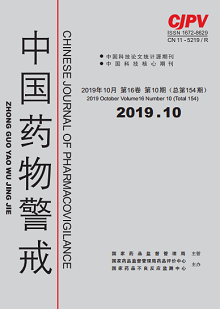|
|
Pharmacokinetics of Isopsoralen in Rat Model with 3 Months of Repeated Administration
MEN Weijie, HUO Xiangxiang, BI Yanan, YUAN Xiaomei, ZHANG Yue, ZHOU Kun
2019, 16(10):
577-580.
DOI: 10.19803/j.1672-8629.2019.10.01
Objective To study the pharmacokinetics of isopsoralen after 3 months of repeated administration in rats. Methods Thirty-six Wistar rats (half male and half female) were randomly divided into three groups. Isopsoralen (14.0, 7.0, 3.5 mg·kg-1) was given for 3 months by continuous gavage , once a day. Blood samples were taken before and after the last gavage to determine the plasma concentration of isopsoralen in rats at different time points, and the pharmacokinetic parameters were calculated with DAS3.0 program. Results The pharmacokinetic parameters of isopsoralen in rats after repeated gavage in high, medium and low dose groups were as follows: AUC was(27287.42±2680.24),(18483.87±2455.46)and(5189.97±791.67)μg·L-1·h-1 respectively, t1/2 was (4.67±0.80),(11.30±2.37)and(5.87±1.52)h respectively, while Cmax was(2509.26±191.78),(2287.06±172.43)and(825.64±76.45)μg·L-1 respectively. AUC, Cmax and MRT in rats increased with the dose. Conclusion Within the dose range of this study (3.5-14.0 mg·kg-1), the pharmacokinetics of isopsoralen given by repeated gavage in rats is nonlinear.
References |
Related Articles |
Metrics
|
